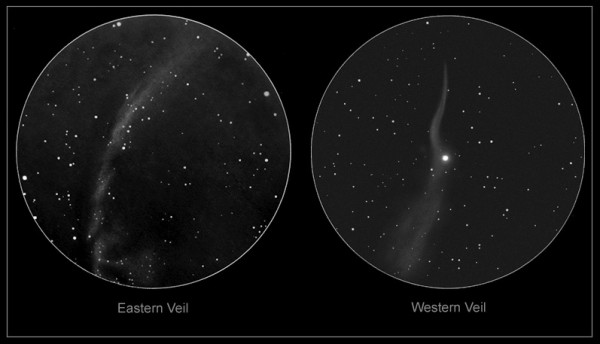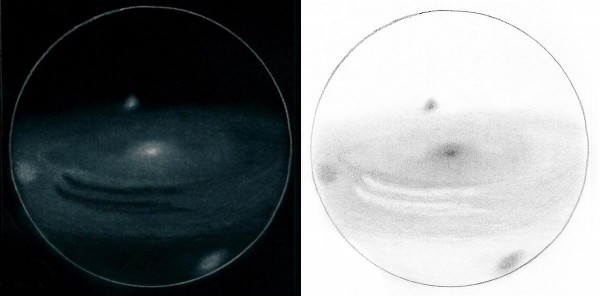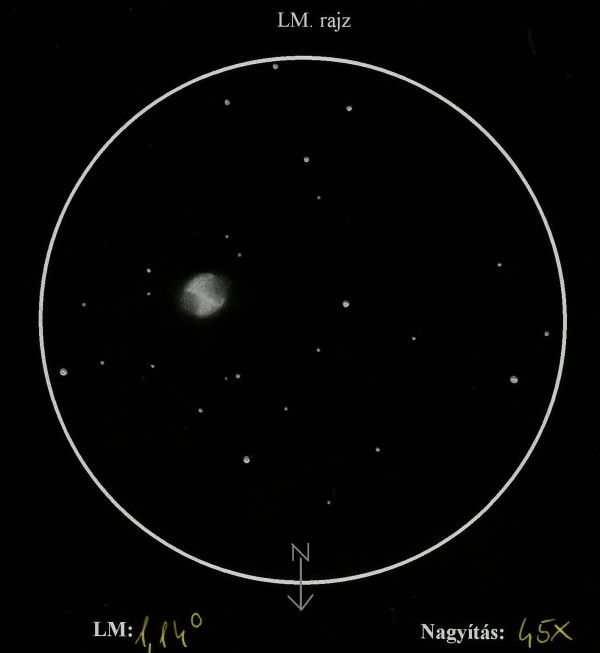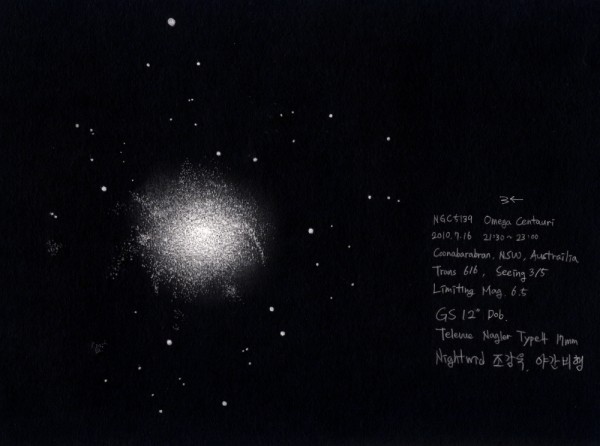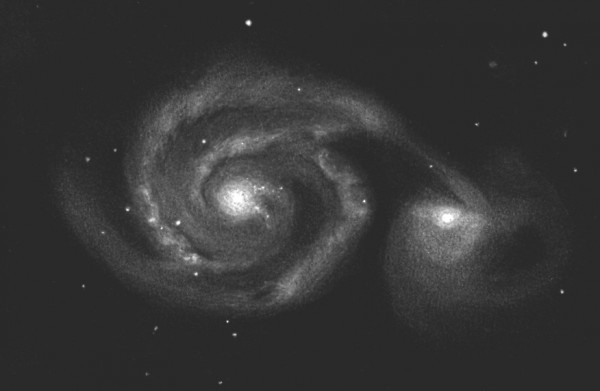
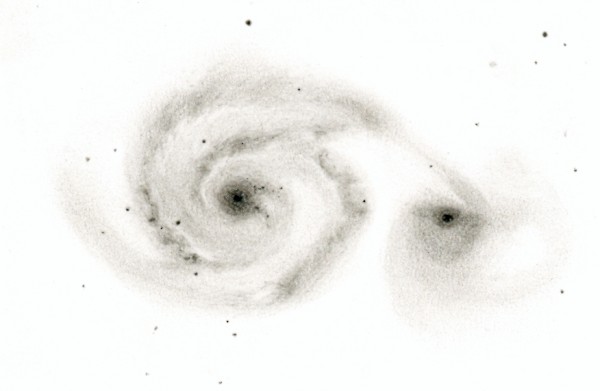
Object Name: The Whirlpool Galaxy (M51, NGC 5194 – 95, Arp 85)
Object Type: Interacting galaxies
Telescope: 28 inch f/4 alt-az Newtonian
Location: Star Party, RTMC
Date: June 2009 to July 2010 (total of seven hours observing/sketching spread out over six nights)
Media: HB graphite pencil on white acid free Canson paper (8 inch x 5 inch sketch book). Inverted sketch created in Adobe Photoshop Elements.
Back in March 2009 I had perhaps my best view ever of the Whirlpool Galaxy, M51, but was too lazy to start sketching. It was a great sight – blazingly bright spiral arms full of star clouds, and the companion galaxy was wreathed in a veil of faint, “E” shaped nebulosity. Frankly, the amount of detail was a bit overwhelming to start a sketch.
That lost opportunity got me going however and I began my “big M51” sketch in June 2009 at the Golden State Star Party. I’ve continued adding detail at every opportunity since then.
My intent with this sketch was to see and accurately record as much detail as possible with my 28 inch f/4 alt-az Newtonian, and that I would take as long as needed to give it my best effort. After a total of seven hours observing over six nights, which were spread out over a year, I’ve come up with the attached sketch. There’s more to see so I anticipate adding a few more details over time.
I started off with a blank page in my 8 inch by 5 inch notebook. My notebook is more of a sketch book that I also take notes in so I like to start with a blank page – no eyepiece circles. This gives me the freedom to expand or contract my sketch and take notes as needed for a particular object. Because of M51’s size and amount of detail I used an entire 8” x 5” page for my sketch.
After observing the Whirlpool for about five to ten minutes at low to medium powers (105x to 253x) I began lightly sketching by starting at the brightest and most distinctive areas. I then extended the light pencil marks out until the basic form was captured. This took some back and forth to get the proportions correct, and involved one do-over. A good eraser was as valuable as the right pencil.
Once the full form was adequately sketched in I started paying attention to small scale details, again working from the brightest area outward. At this point I was using higher powers as the seeing allowed. Specifically, I used magnifications from 408x to 816x, but most of the time I was in the 408x to 438x range. To see the most stellar-like points I used 710x to 816x.
I built up the basic outline and filled in most of the major details within the first two hours of my sketch in June 2009. The next five hours of observing and sketching were spread out over four different nights in May and July 2010, and at times I used photos of M51 to help track down subtle and faint details that would have otherwise been missed. The most subtle detail I detected with without specific photographic aid were the dark lanes running on the inside of the main spiral arms. Also, two faint background galaxies (IC 4277 and IC 4278) are shown in the upper right area of the sketch. 4278 was fairly easy to see but 4277, the one on the far right, required a big effort with averted vision to detect. In deep photos this is a small edge on galaxy. SQM readings for my observing sessions ranged from 21.4 to 21.7.
My sketch was made almost entirely at the eyepiece, with only some blending of discrete pencil lines and cleaning up the star points done later.
Best of all this effort has inspired me to start a series of “big” sketches of my favorite objects. Currently in the works is an M33 sketch and I look forward to starting on the Trifid Nebula next spring.
Howard Banich


